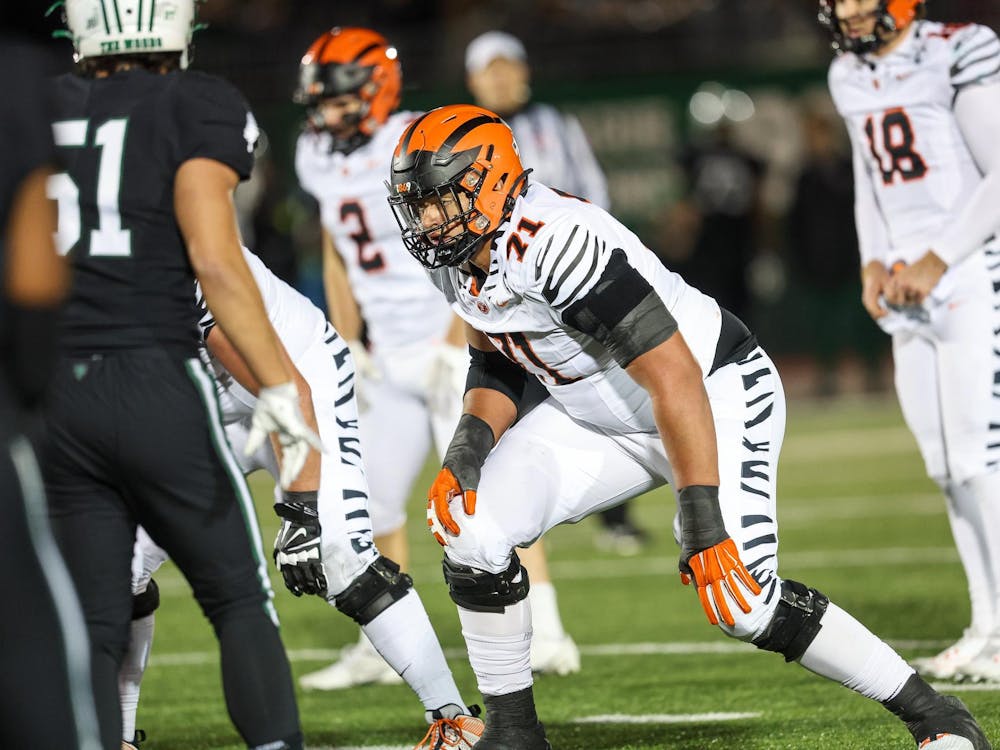When I first arrived at my home-stay in Cochabamba, Bolivia, my host mother told me to use the soccer stadium as a landmark if I ever got lost. Located just a few blocks from where I was staying, the stadium lies right on the river that divides the city into north and south and is quite hard to miss.
The stadium houses boxing, karate and weightlifting classes on non-game nights, and on weekends the plaza outside the ticket booth transforms into a bustling market, selling everything from flags to food to puppies. It is the city’s main concert venue when major reggaeton artists like Daddy Yankee or Chino y Nacho come to town. According to my host family, the stadium even served as a detention grounds for water balloon-wielding youths many years ago when the citywide water fight in the days leading up to Carnaval got out of control.
But of course, the stadium is first and foremost a place for soccer. Two Cochabamba club teams — Wilstermann and Aurora — claim Felix Capriles Stadium as their home. Wilstermann, named after Bolivia’s first professional aviator, is the perennially stronger team but has declined significantly in recent years. Aurora, known as the “team of the people,” has gained in popularity due to its recent success. The two teams meet often throughout the season in what is known as Cochabamba’s very own “Clasico.”
I had the opportunity to attend a clasico during my time in Bolivia, where I was interning for an environmental nongovernmental organization through Princeton’s International Internships Program. On the night of the game, I met my friend Carra — another Princeton sophomore intern — in front of the box office at the stadium. We had an hour to kill before kickoff, so we got fried chicken, rice and plantains at Panchitas — Bolivia’s answer to KFC — and shopped for kits at the stands outside the stadium. We both settled on Aurora’s blue and white T-shirts because, true to the team’s working class identity, they were a full 10 bolivianos (roughly $1.50) cheaper than their Wilstermann counterparts.
After kickoff, Carra and I quickly realized that we were not watching a conventional soccer game. The announcer introduced the match as a friendly, adding that each side was partly made up of old-timers, which explained the five overweight or arthritic players on each team. But for a game that didn’t count, I was impressed by the fans’ devotion to the game and their teams. The stadium was nearly sold out. Los Gurkas — a group of Wilstermann-supporting hooligans that lit fires and set off fireworks in their section of the crowd — were out in full force. The crowd cheered after every goal and defensive stop, and the Aurora fans celebrated and chanted after their team’s victory.
When I got home and told my host family that I had gone to the game, my 13-year-old host brother — a huge fan of Argentinian superstar Lionel Messi — excitedly asked me if I meant the Argentina-Bolivia game. I didn’t know what he was talking about, but my host mother explained that the Copa America was about to begin, and Bolivia had drawn the international powerhouse in the first round of group play.
Unfortunately, I went away for the weekend, so I couldn’t see the match, but when I returned I found out that the two countries had tied 1-1. This was a huge accomplishment for Bolivia, whose national team has struggled recently and has not been in the World Cup since 1994. The excitement was palpable in the crowd that congregated the next weekend for Bolivia’s match against Costa Rica on “El Prado,” a large avenue lined with palm trees and park space in the center and restaurants and hotels on either side. At the top of “El Prado,” Coca Cola had set up a huge jumbotron for fans to watch the game in public. Purchase of a can of Coke was necessary to sit right in front of the screen, but that didn’t stop fans from crowding around, even if they hadn’t bought a Coke.
I watched the game with the same group of gringos that had traveled with me. Although most of us had only been in the country for a few weeks, we shared the crowd’s frustration as “La Verde” failed to capitalize on scoring opportunities in the first half, and we felt the disappointment when Costa Rica’s two second-half goals put the game out of reach.
We returned to “El Prado” a few days later to watch Bolivia’s next matchup against Colombia. The crowd was much thinner and the atmosphere was notably more subdued; people seemed to have lost faith in their national team. Ninety minutes later, Bolivia was eliminated from the tournament, having suffered another 2-0 defeat.
I passed by the jumbotron on “El Prado” many times over the next few weeks, and I was surprised to see a crowd that was just as enthusiastic as when its own team was playing. While they sometimes rooted for one team or another — in the finals, the fans rooted unanimously for Uruguay over Paraguay, a country that gained over half its territory in a war with Bolivia in the 1930s — the main reason “Cochabambinos” still came by “El Prado” was to enjoy watching high quality soccer. It was for the love of the game.
I tend to simply stop watching baseball in September, once I accept that there’s no way the Mets are going to make the playoffs. I did not follow basketball between the 2006-07 and 2009-10 seasons just because the Knicks were painful to watch. But seeing the devotion of the fans at the friendly clasico and on “El Prado” even after Bolivia had lost helped me understand that seeing your team win is not nearly as meaningful or important as appreciating the sport.








